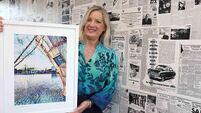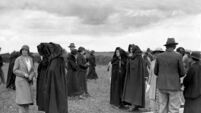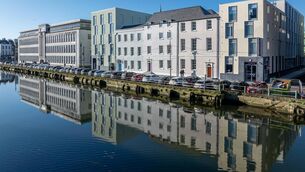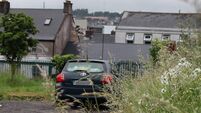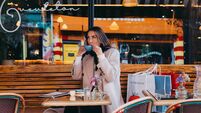Paying a visit to Santy in Cork

Nora, Margaret Dan and Pat White, Summerhill, Cork queue to meet Santa at the Munster Arcade in 1967.
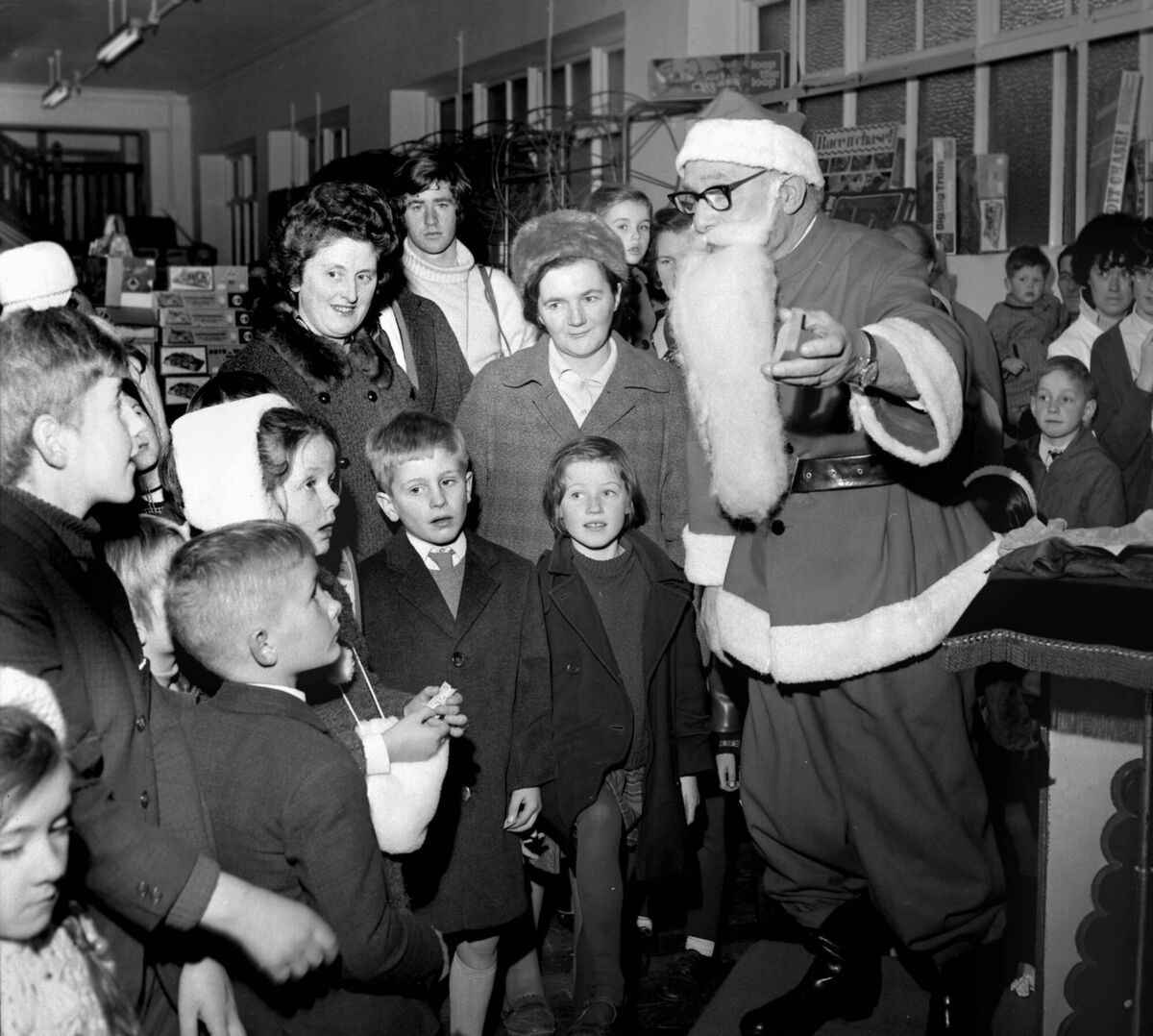
The earliest account of Santa Claus distributing presents to children in a department store in Cork dates to November, 1926, when Robertson, Ledlie, Ferguson’s department store, The Munster Arcade, advertised that ‘Father Christmas from his Villa Residence distributes to boys and girls suitable toys at a cost of 1’- each’. Within a year or two, the other large Cork shops, Grants, The Queen’s Old Castle, and Cash’s, vying for this trade, installed their own ‘toylands’, along with the parcel-gifting Santa. Roches Stores did not start its Santa campaign until the 1950s, while Dowdens, the other large outlet on Patrick Street, never had one. In the late 1920s, the Santa in Grants (beside the Mutton Lane Inn on Patrick’s Street) was installed, ‘promenading the balcony of our Patrick’s Street warehouse’, where, on paying a shilling, children could ‘walk up the steps, ring the bell and out will come Santa Claus with a lovely present’.

This Christmas trip to the very top of the building to see Santa has long lived in the memories of many Corkonians. So many have recounted it as one of the stalwart memories of their childhood Christmases. Those visiting in the 1960s remember walking down a long corridor into the dark attic space and while waiting to see Santa, they sat in a small, make-shift cinema, wide-eyed and mesmerised, watching the now forgotten Christmas cartoons, Walt Disney’s Santa’s Workshop (1932) and The Night Before Christmas (1933).
While the children were visiting Santa, their parents were busy buying presents.
A glance at the advertisements promoting suitable toys for children in Cork’s ‘toylands’ and Christmas ‘bazaars’ some 100 years ago encompasses many classics. They include ‘lovely dolls from the tiniest to almost life-size’ in addition to ‘racing cars, model aeroplanes, cowboy outfits, railway engines, cranes, teddy bears, doggies, sleeping babies, pedal cars, books, prams, soldiers and lorries’.

In addition to buying for the children, the adults were also encouraged to buy their own luxuries. In Cash’s and other department stores, the promoted items included ladies’ and gents’ umbrellas, handkerchiefs, wool cardigans, silk dressing gowns, which are noted as ‘a very acceptable present,’ along with brush and comb sets, travelling rugs, railway wraps, trousers stretchers, and ladies’ handbags. Notably, the now obsolete and maligned wearing of animal furs was then at its height. Suitable Christmas presents included new fur ties in skunk and natural fox, bear, stone marten, wolf, and squirrel tail, along with ’elegant fur coats’ in new smart styles in beaver, musquash and coney seal.
By the late 1940s and early 1950s, the inspirational innovation of photography was added to the ‘going to see Santa in town’ experience. Robert Day and Sons on Patrick Street were one of the pioneers of this idea, employing the ‘Movie Snaps’ photographer and declaring ‘a photograph of your child with Santa Claus is a picture of childish charm to be treasured for ever’. Professional photographers grabbed the new lucrative opening for their trade, and some, such as the Healy brothers, worked in Cash’s, capturing the eternal moment with Santa.
In the mid-1960s, the new instamatic Polaroid camera allowed an immediate ‘no-waiting’ snapshot of the event. By the 1960s and 1970s, other than the big shops, many of the smaller shops and outlets, such as Kilgrews and Murrays on North Main Street, were offering toyland and photos with Santa. Perhaps the most popular was Buckleys in Academy Street, who cornered the market with the novel idea of getting a young fawn and putting him in a cage. They advertised ‘Visit Santa in his cave and see Rudolf – his own live deer’ and without fail, every child in Cork wanted to visit.
My late father Tadg, worked as a commercial artist, and in addition to making cribs at Christmas time, he was the one who painted and decorated the many Santa ‘grottos’. He was always imaginative in bringing something new to the diorama, and during the Apollo Lunar missions of the 1960s and ’70s, he would paint Santa sitting on a rocket on his way to the moon. His numerous backdrops feature in many of the Santa photographs from the 1950s onwards.
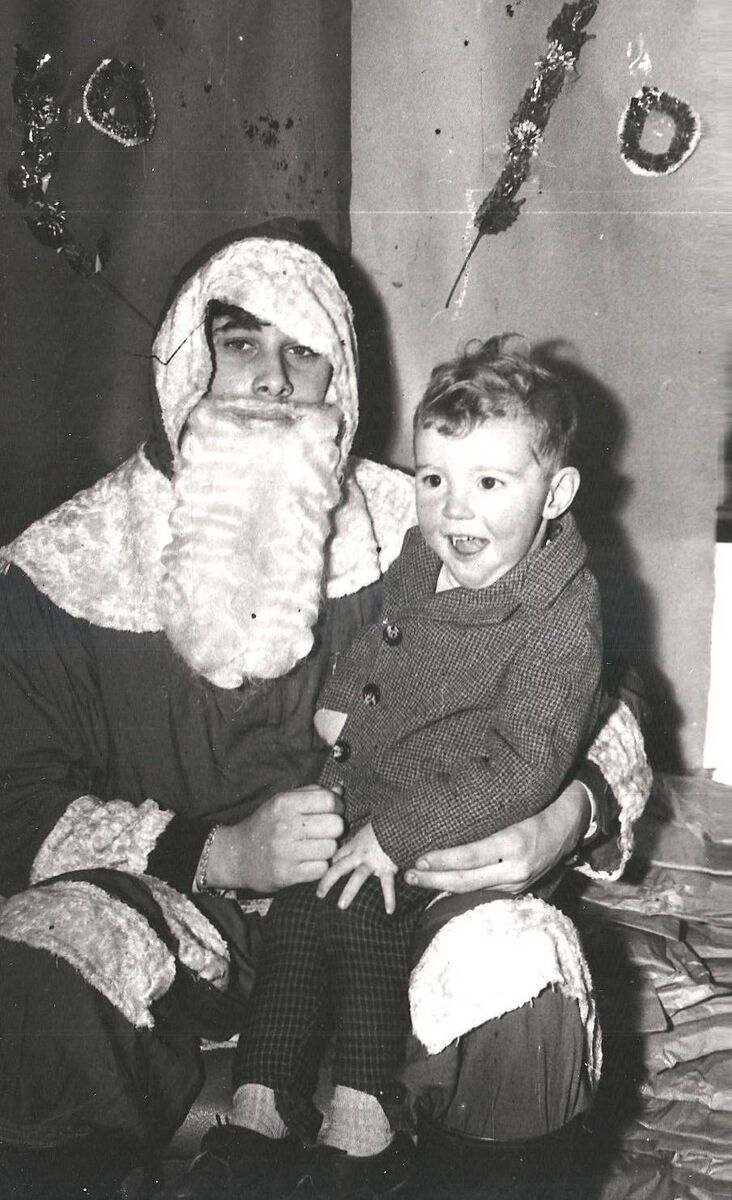
Over the years, I have asked my students to share their Santa photographs with me. A number are reproduced here. While the collection has become an eclectic mix of children sometimes confronted with disconcerting Santas, it is more importantly, a record of each of us at a formative period in our lives, specifically at one repeating point in the cycle of the year.
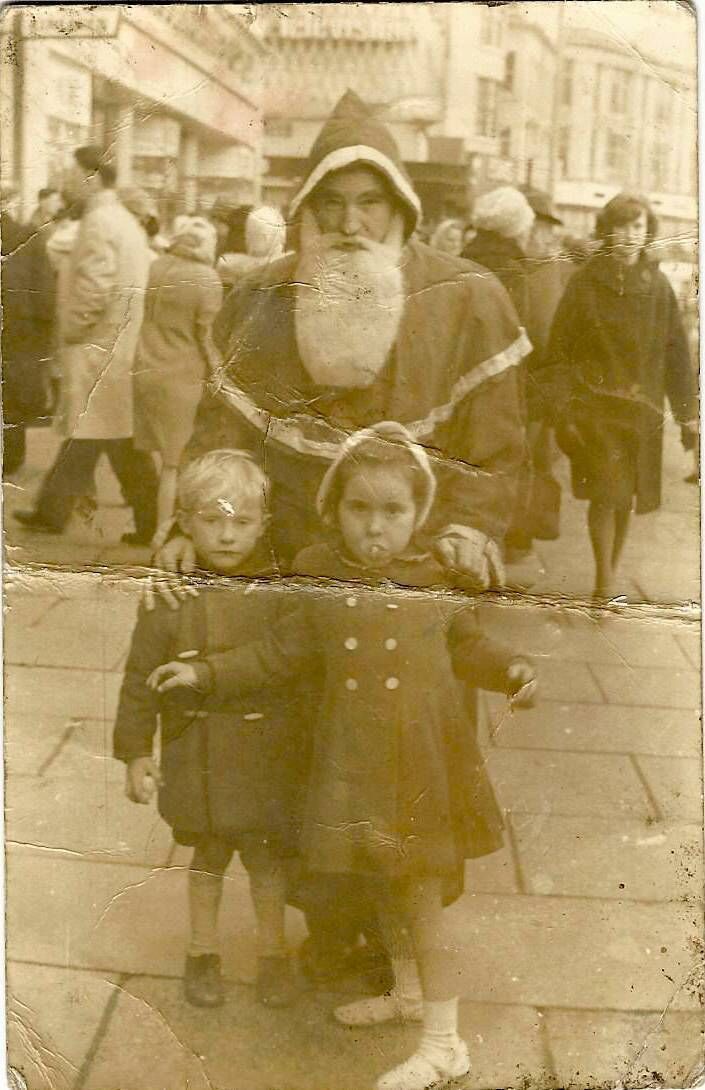
When you visited Santa in town and had your photograph taken with a ‘shop Santa’, you literally have a shared ‘snapshot’ of innocence and suspended disbelief where you are fully absorbed in an eternal moment of magic. A photograph of any one child at Santa is a photograph of each and every one of our visits to Santa: it is a collective, shared, enduring emotive context of memory.
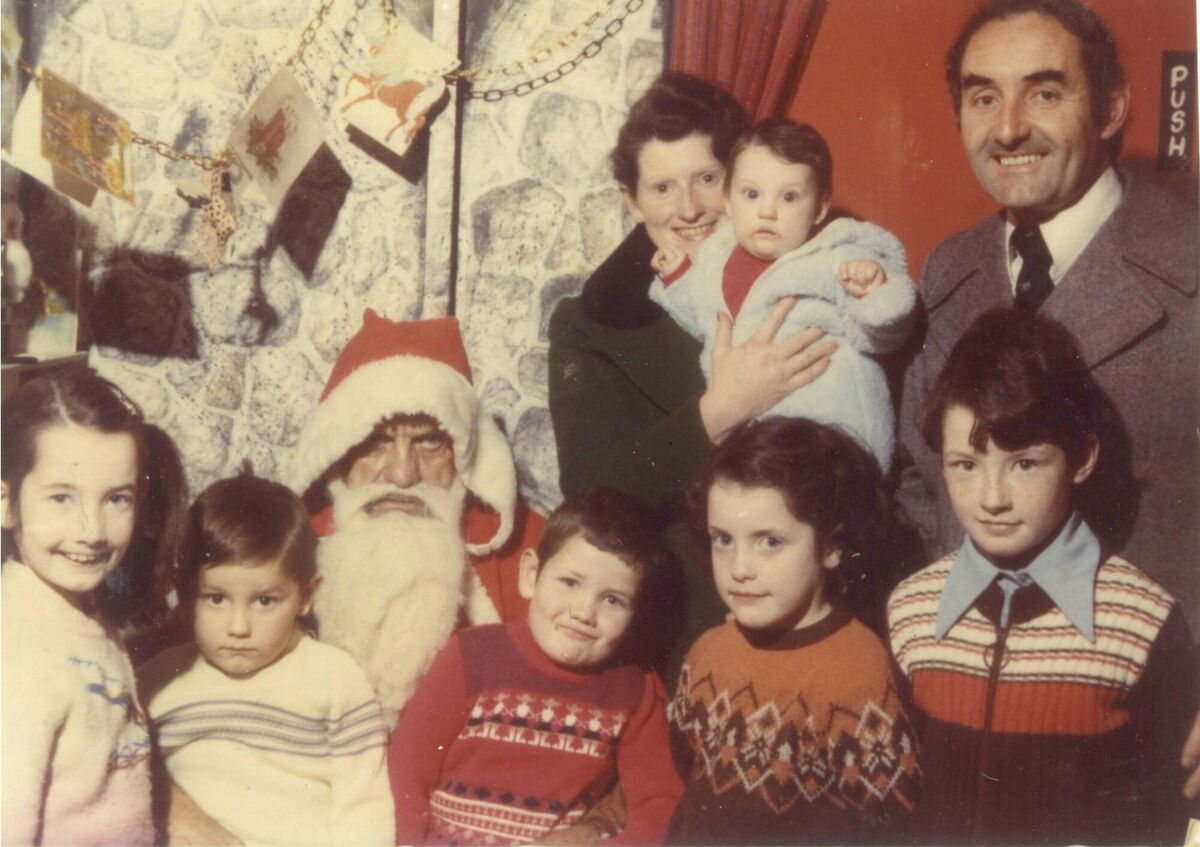
It is this detail of the familiar, the nostalgia of the shared sameness, that fixes our attention and widens our eyes in recognition of where we all once have been.
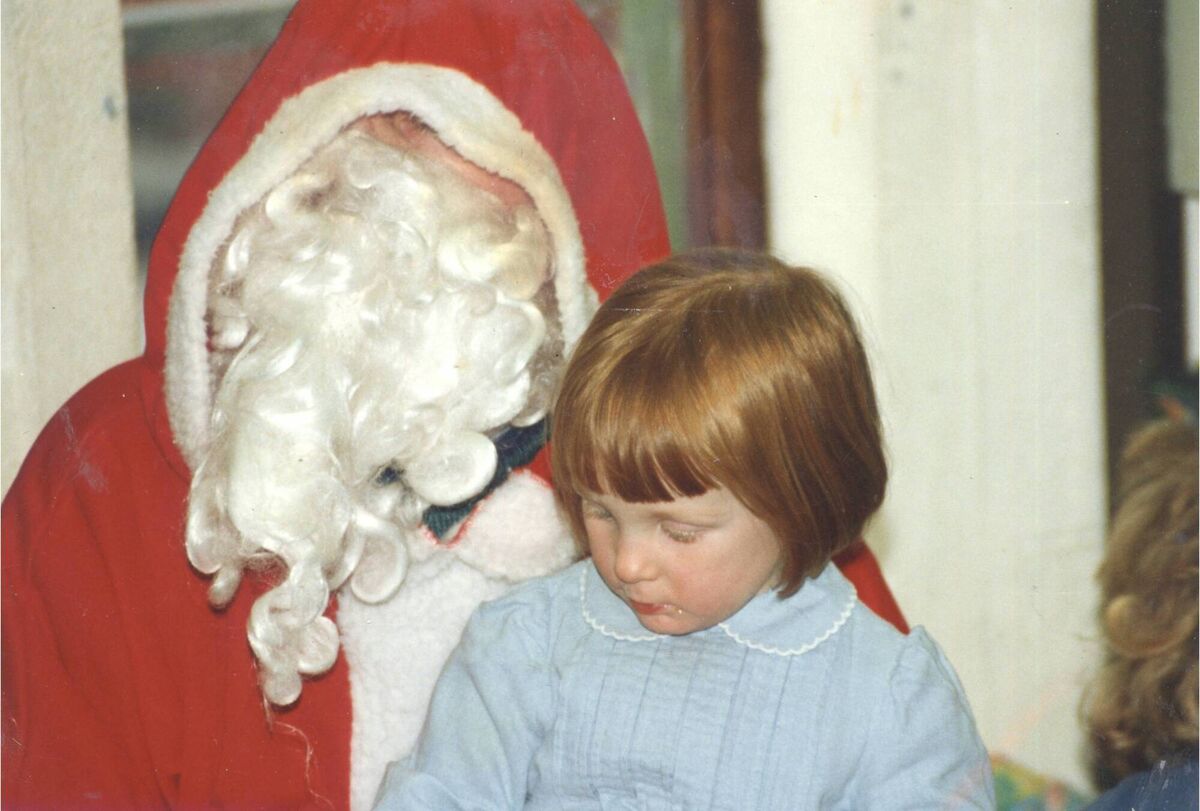
In our habitual repetition of this timeless, magical Santa experience, we are all one, past, present and future.
- Shane Lehane is the course director of Cultural & Heritage Studies at Cork College of Further Education, Tramore Road Campus, and lectures in folklore in UCC. His new book, , is published by Hachette Books Ireland.

